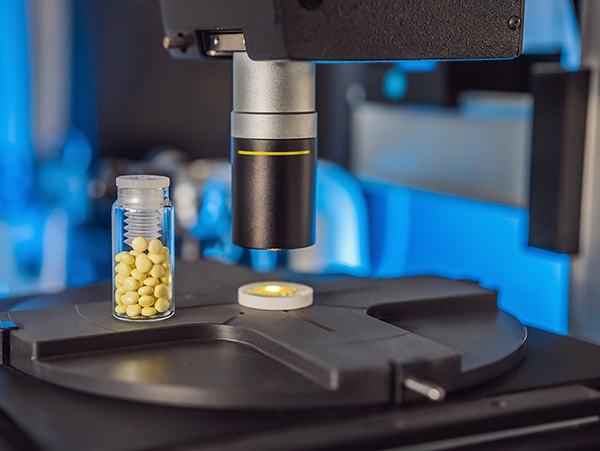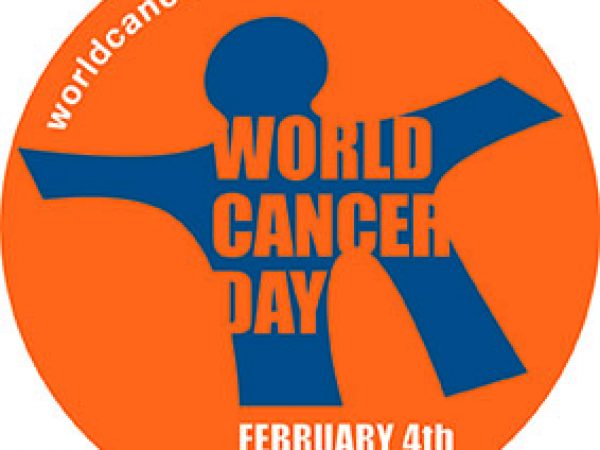Roadblocks and Potential Solutions in Anticancer Drug Development
It is an exciting era for drug development in oncology. The many discoveries of new molecular targets, coupled with rapid leaps forward in technology, have allowed cancer researchers to advance an unprecedented number of new investigational agents, which translated to a steep increase in FDA approvals in the past 10 years benefiting patients with a variety of cancer types.
In the closing session of the AACR-NCI-EORTC Virtual International Conference on Molecular Targets and Cancer Therapeutics, held last October 7-10, an expert panel including representatives from industry, academia, and the U.S. Food and Drug Administration (FDA) discussed some of the key issues that can impact efficient anticancer drug development and the path toward bringing new treatments to patients.
Testing New Drugs Early in the Disease Course
Maria Koehler, MD, PhD, executive vice president and chief medical officer at Repare Therapeutics, discussed the concept of unmet need as a guiding principle for the approval of new drugs.
New drugs that might fulfill an unmet need by addressing diseases with no or few available existing treatments can qualify for expedited approval mechanisms. However, the downside of this paradigm is that pharmaceutical companies select narrow patient populations for whom the real benefit is often limited and who are not necessarily representative of the general patient population.
According to Koehler, the concept of unmet need is a misnomer, because under this model patients enrolled in clinical trials typically have metastatic cancer with documented failure of multiple previous therapies. Therefore, being at a late stage in the course of their disease, they often only benefit from the experimental therapy for a short time. At the same time, the patient populations that can potentially derive a greater benefit from the new drug have to wait for its approval for earlier lines of treatment.

Koehler suggested that early- and late-disease stage should be addressed in parallel rather than in sequence. In her opinion, this involves using the new technologies to better understand the underlying biology and pathology, and defining the ideal patient populations based on the molecular background.
“I believe the FDA recently modified the eligibility proposal for phase I trials where it seems that the ‘exhausted all therapies’ paradigm is finally being revisited, but I think we can do better, broader, and faster,” she commented.
Tatiana Prowell, an associate professor of oncology at the Johns Hopkins Sidney Kimmel Comprehensive Cancer Center who also serves as the Scientific Lead for Breast Cancer in the Office of Hematology & Oncology Products at the FDA, confirmed that this change is taking place in response to feedback from patients and patient advocates.
According to Prowell, patients and advocates consider this as an issue of consent and believe that, as long as they are sufficiently informed, they should be able to decide to enroll in a trial of an unproven agent, even if they haven’t exhausted all the drugs that are already available.
The new guidelines apply to patients who are being treated in a non-curative setting and will allow them to enroll in first-in-human phase I trials earlier in their disease course.
She added that this is an example of the many guidances for which patient advocates are intimately responsible, the most notable being related to the modernization of trial eligibility criteria.
The new criteria allow patients often excluded from clinical trials, such as those with brain metastasis, organ dysfunction, and concurrent conditions like HIV or hepatitis, to participate in the trials. Prowell commented that patients want to participate in clinical trials and get a second opinion, but often they can’t find any trial they are eligible for, so it was very important to update these eligibility criteria.
“The typical path is to start very late, at the end of the journey, and then start working backward,” added Levi Garraway, MD, PhD, executive vice president, head of Global Product Development and chief medical officer at Genentech. He suggested that the process instead should start earlier in the disease course, when the impact on durable disease control is potentially higher.
Garraway noted that one of the reasons for testing investigational drugs in late-stage disease is that, with the current structure of clinical trials, most studies are large and often have years-long follow-up time, limiting the number of trials even industries can run.
According to Garraway, we are now rapidly moving into a potentially different era of expanding clinical trials to the early disease setting. “The pieces are coming together, but what we don’t yet have is a framework for how we explore earlier disease hypotheses in a more streamlined fashion so that companies like ours can be incentivized to take shots on goals much more deliberately and robustly,” he said. “Now is the time. We are the generation that can take these strides because that is where the outsized patient benefits can happen, and we can bring more cures in the context where cures are possible.”
Biomarkers and Selection of Patient Populations
Speakers and moderator Jean-Charles Soria, MD, PhD, senior vice president of oncology at Amgen, debated the best method for patient selection in oncology trials—between a precision approach guided by biological questions and biomarkers, and a broader, “all-comers” approach, in which patients are not selected based on a specific biomarker status, allowing for some serendipity in the process.
Koehler is a proponent of using the drug’s mechanism of action to guide patient selection, as this approach can potentially “save patient resources, progress the science, and, importantly, create true value for patients.”
Ruth Plummer, MD, professor at the Northern Institute for Cancer Research, Newcastle University, argued that in the real world, patient selection is more complicated than that. She explained that the trial on which the first PARP inhibitor received approval was not conducted only in the BRCA-mutated population, yet there were patients in the biomarker-negative group whose disease responded to the treatment, highlighting how a stringent selection can end up narrowing the population that benefits from the treatment.
Garraway described this debate as a polarity between two seemingly incompatible truths. He proposed a double-pronged approach moving from a stringent, hypothesis-driven “molecular thinking” but also including additional all-comers studies, because often, even when the biology is strong enough to identify a subset of patients who might benefit, there might be other contexts in which a drug may work as well in a broader population.
Bringing the regulator’s perspective to this debate, Prowell emphasized the importance of testing drugs with solid hypotheses but also having an open mind to the possibility that the biomarker that was chosen might not be the best one.
“We hinder ourselves when we rely too much on biomarkers. Sometimes we see drugs with more than one predicted biomarker response; other times the most important biomarker is not the first one identified. It is hard to generalize, but we’ve been wrong enough times in science that it pays to study some people who don’t have what we think are the major predictors of response,” she said.
Prowell also noted that including patients who lack the biomarker of interest can be useful to develop a companion diagnostic along with the drug.
According to Emiliano Calvo, MD, PhD, director of START Madrid, there is still a lack of valid animal models and the most advanced available, such as mouse models with a humanized immune system, can be very expensive, even more than running a phase I trial. As a consequence, often phase I trials become the primary source of information to guide potential future development, and this makes patient selection more critical.
Lillian Siu, MD, a senior medical oncologist at the Princess Margaret Cancer Centre and a professor at the University of Toronto, added that one solution to improve biomarker selection and impact trials would be to increase data sharing. “A lot of the studies that we do as phase I trials are never published, no matter how hard we try, because [the data] are negative,” she said, noting that these negative data get buried and never shared. Yet, other researchers who are developing a similar drug may learn from negative findings. “One thing we should learn is to be able to do more data sharing and more publication of negative data.”
Maximum Tolerated Dose and Optimal Biological Dose: What Is Ideal?
The panelists discussed maximum tolerated dose (MTD), a dose-finding method developed for conventional cytotoxic drugs to identify the highest dose with an acceptable level of toxicity, which may not apply well to targeted agents and immunotherapies that have specific mechanisms of action and for which activity and toxicity are not always correlated.
Prowell noted that because the newer classes of drugs are often not used for just a few cycles but may be taken for 18 months or longer, MTD might not be efficient in predicting toxicity and tolerability. Side effects with targeted therapies and immunotherapies are not as severe as with chemotherapy but can occur later in the treatment, often after the first cycle, therefore the MTD might not be reached.
As an alternative to MTD, the concept of optimal biological dose (OBD) was introduced to account for efficacy in addition to toxicity. OBD is defined as the lowest dose that provides biological efficacy in early-phase trials.
Prowell explained that new drugs approved based on the dose used in the phase III trial often cause side effects when prescribed to patients, and dose reduction becomes necessary. “We don’t know if that loading dose of a couple of cycles was necessary at all; could we have simply used the lower dose from the outset?”
The Bureaucracy Mountain
The panel was in agreement that bureaucracy is necessary but sometimes creates excess burden that affects all the parts involved in testing and approving a new drug, often making the trials more expensive.
James Gulley, MD, PhD, director of the Medical Oncology Service at the National Cancer Institute, noted that while the FDA has become more flexible, there are other aspects of the clinical trials that could potentially be optimized to make the process more efficient, including limiting some of the bureaucratic requirements.
Prowell explained that different countries have very different systems for how trials are conducted and how drugs are approved and reimbursed, and the FDA works hard to try to harmonize where possible with international regulators. For example, Project Orbis, an initiative of the FDA Oncology Center of Excellence, provides a framework for submission and review of oncology products in parallel in multiple nations. “We do recognize that it’s really not practical for pharmaceutical companies to be conducting multiple clinical trials to achieve the same end-goal in different geographic regions.”
Josep Tabernero, MD, PhD, head of the Medical Oncology Department at Vall d’Hebron University Hospital, Barcelona, added that harmonizing the requirements for starting a clinical trial with different regulatory agencies is a mandate for the future, and all the actors should work toward this. He highlighted the progress made by the FDA and European Medicines Agency but noted that more work is needed.
New Technologies to Help Navigate the Complexities of Drug Development
Artificial intelligence (AI) is already being utilized in some areas of medicine, particularly in image-dependent specialties. According to Calvo, it can bring a revolutionary change to clinical research as well, to develop better drugs sooner, cheaper, and with a wider access for cancer patients.
“We are trying to develop our current drugs with tools from the previous century,” he said. “AI is a combination of big data, machine learning software, and computational power, and I think we already have that. We need to have some investments in infrastructure, we need some changes in operational philosophy and data curation in order to have more coherent data, but all these aspects are perfectly addressable. The technology is here for that.”
According to Gulley, there are many potential opportunities to use digital health approaches with the tools we have, such as passive data capture through everyday smart devices such as watches and phones. This could be helpful when comparing the outcomes in different arms of a study, for example between chemotherapy, which can cause severe side effects between visits, and a new agent that may not cause severe toxicity in that time frame.
Lessons Learned From COVID-19
The COVID-19 pandemic has provided a big push in the direction of making oncology trials more accessible.
“I think this is one of the very few silver linings of the pandemic for me professionally,” said Prowell. She added that the biggest barrier to bringing clinical trials closer to patients is a structural one: Patients don’t have unlimited time off work, or child care, and sometimes it’s not feasible for them to travel far away to receive treatment. “What we learned during the pandemic was that some of the barriers that were present were really constructed by all of us and could be easily dismantled without much loss of quality or patient safety, which were really the two issues that always led to having the requirements that we had.”
As Prowell noted, very early in the pandemic in March 2020, the FDA put out initial guidance offering advice and allowing more flexibility in different aspects of clinical trials, including whether patients are required to come in person to the study site for visits, who can dispense the investigational products, where laboratory and imaging studies can be conducted, and how to handle visits outside of a prescribed window of time.
“I am excited about piloting a specific dataset called ‘COVID mode’ that invites pharmaceutical companies to flag any aspect of the trials that was modified in response to COVID,” she said. The goal, she added, is to be able to look in a systematic fashion at the modifications made to the protocols after the onset of COVID and identify the flexibilities that can be retained.
Siu agreed on the many lessons learned from the pandemic. “COVID has also taught that drug development can happen quickly,” she said. “I think if we can combat COVID quickly in terms of making trials happen and getting the vaccines approved quickly, we should learn that lesson. We can do the same thing to crunch the timeline for drug development in cancer.”



